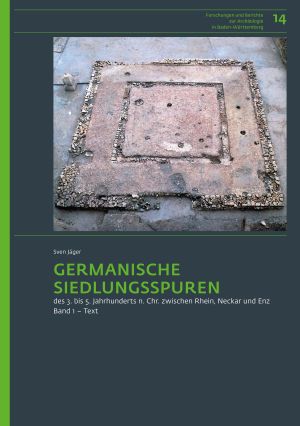
How to Cite
Published
Downloads
Germanische Siedlungsspuren des 3. bis 5. Jahrhunderts n. Chr. zwischen Rhein, Neckar und Enz
The period from the 3rd to the 5th century AD brought a radical change to the area of present-day Baden-Württemberg: the limes of the Roman province of Germania Superior was abandoned as a result of political turmoil and military conflicts, and many inhabitants left the region. Subsequently, a more basic Germanic settlement system was established where Roman villages and rural estates had previously existed. Recent excavations provide information about the development of individual sites during this period and the changes in the settlement landscape. Why did some places have a Germanic successor settlement and others not? Were romanised germanic people who already lived in the Roman provinces a nucleus of the occupation of the 3rd to 5th centuries? These and other questions are addressed in the study at hand on the basis of 32 sites from a study area extending form the Rhine plain over the Kraichgau to the middle Neckar region and from the southern foothills of the Odenwald to the Enz valley.







